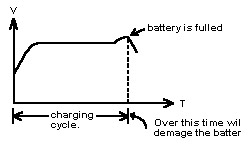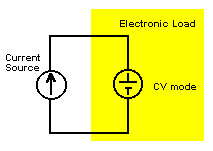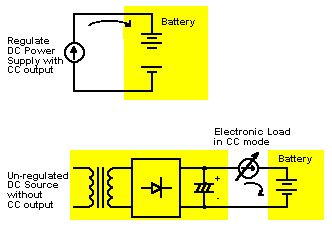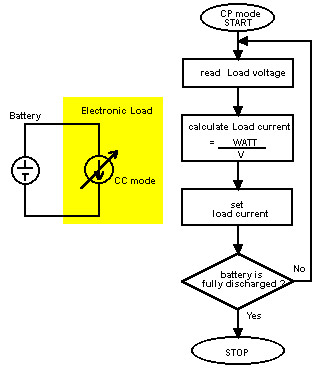

Application Notes-304
Testing of battery chargers and batteries
Secondary/Rechargeable batteries require a battery charger. A good battery charger should provide a stable constant current, and turn off automatically when the battery is fully charged. These important features ensure maximum battery life.
Prodigit's Electronic Loads provide a good testing solution for battery chargers. While testing a battery charger Prodigit's 3310 Electronic Load will simulate the voltage and load profile of a charging NI-CD or NI-MH battery.
Typical NI-CD or NI-MH battery charging characteristic curve is shown below:

The Prodigit 3310 series electronic load and 3302 single mainframe can simulate the terminal voltage of a battery.

A battery charger should stop charging as soon as battery terminal voltage begins to drop ( - !£g¢Fa, negative voltage slop). Overcharging a battery will cause permanent damage.
An actual secondary battery could be used to test a charger, however, this would be a long and tedious process and so is not always practical or cost effective.
When using an electronic load, set the load to the CV mode, and program the desired terminal voltage. For example: for a 1.2V secondary battery program the terminal voltage from 1.0V, 1.2V, 1.44V to test the output current regulation of the battery charger, then set to 1.40V ( -V, which indicates the battery is fully charged) to determine if the battery charger will shut down or not.
While using Prodigit's 3302 Mainframe and 3310 series Plug in Electronic Load modules, you can read voltage/current directly from the front panel. The five memories are very useful for programming up to 5 different terminal voltages for convenient, repetitive testing.
Note:
Actual rechargeable battery output voltage may not be 1.2V, but 3.6V, 4.8V, 9.6V or any other multiple of 1.2V.
2. Testing a battery.
2.1 Discharge testing
A battery, either primary or secondary, can be represented as a voltage source. The unit of measurement for stored energy is mAh or Ah. For example, 12V 6A output for one hour or 12V 1A for six hours.
To test the discharge characteristic of a battery the CC mode should be used. The battery should be able to supply testing current for a period of time within a voltage limit. A computer or printer can be used to monitor battery voltage / current via GPIB or RS232 interface. The CP mode can also be used to test battery discharge characteristics. The Electronic Load's current will increase automatically if the load voltage is decreased or vice versa. The Electronic Load will sink a constant power (V!NA) when operate in CP mode.
Prodigit 3310 series Electronic Loads can simulate CP mode
with a computer. Use a computer to read load voltage and Calculate the
desired load current by
![]()

2.2 Charge testing
The Prodigit 3310 can also be used to test the charge characteristics of a rechargeable battery. A regulated DC Power Source with CV/CC output can be used to charge a battery; or an un-regulated DC Power Source without CC output (such as very simple rectifier and capacitor filter circuitry) can be connected to an Electronic Load. Charge current is controlled by the Electronic Load (the Electronic Load is in the CC mode.)
